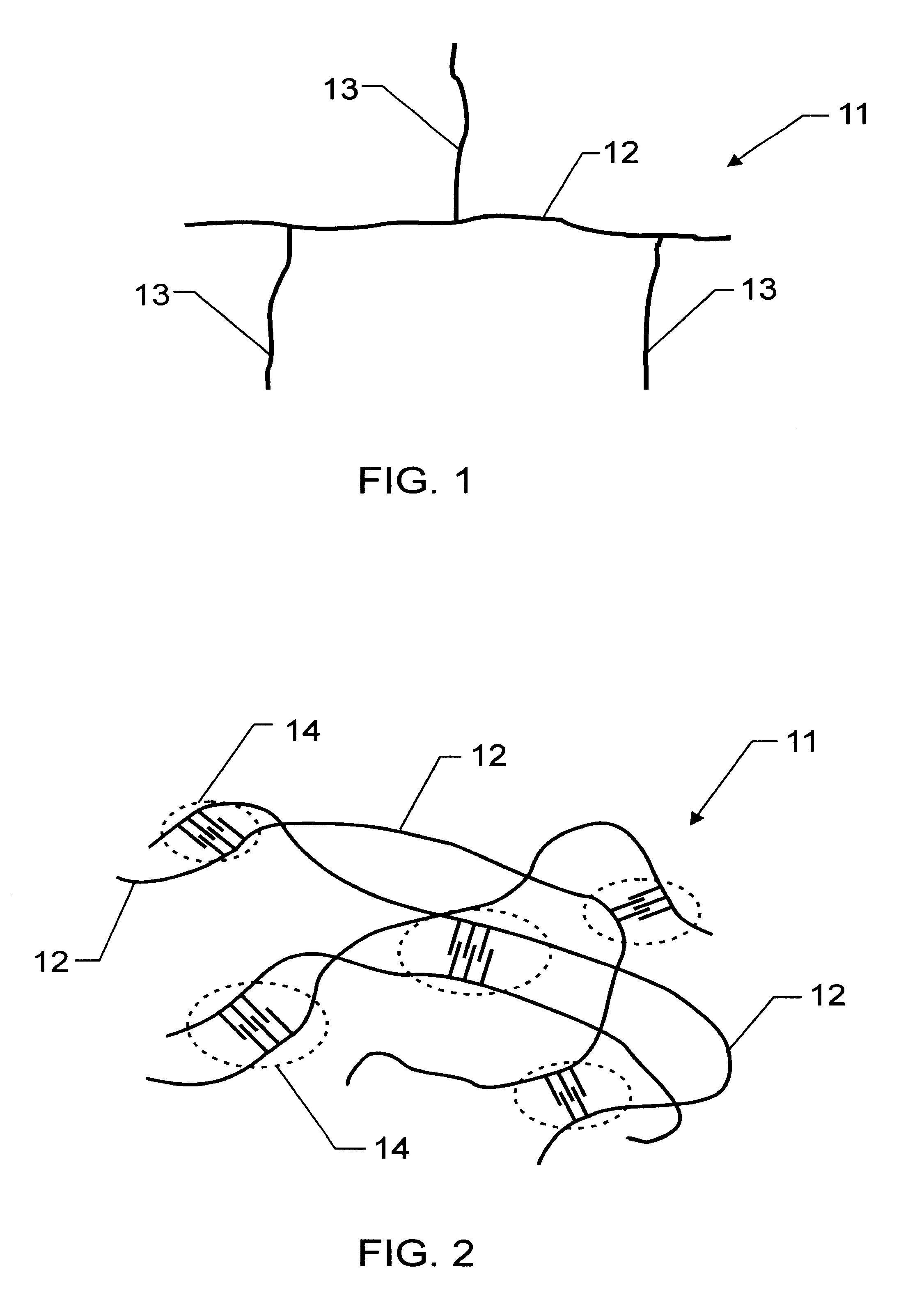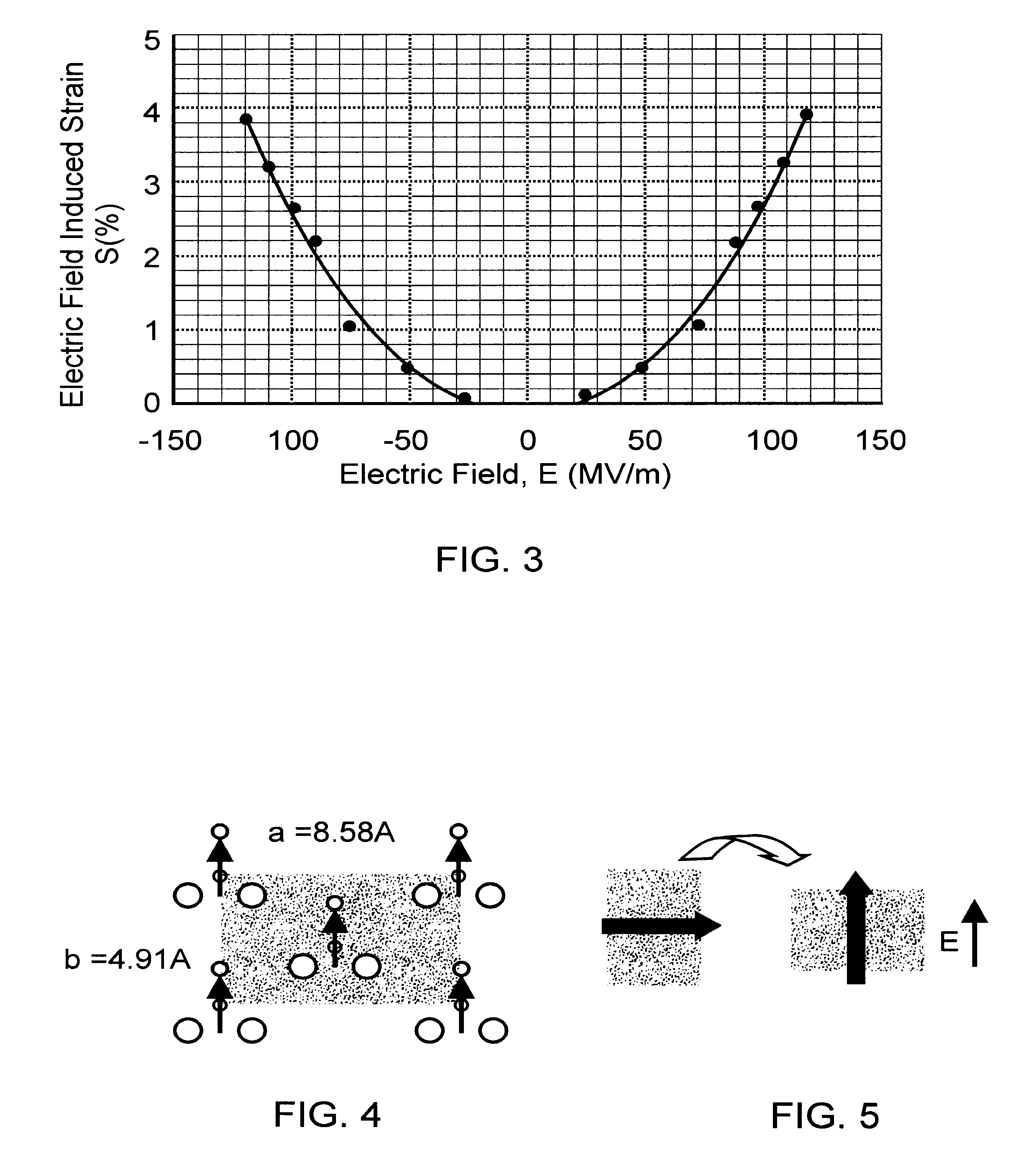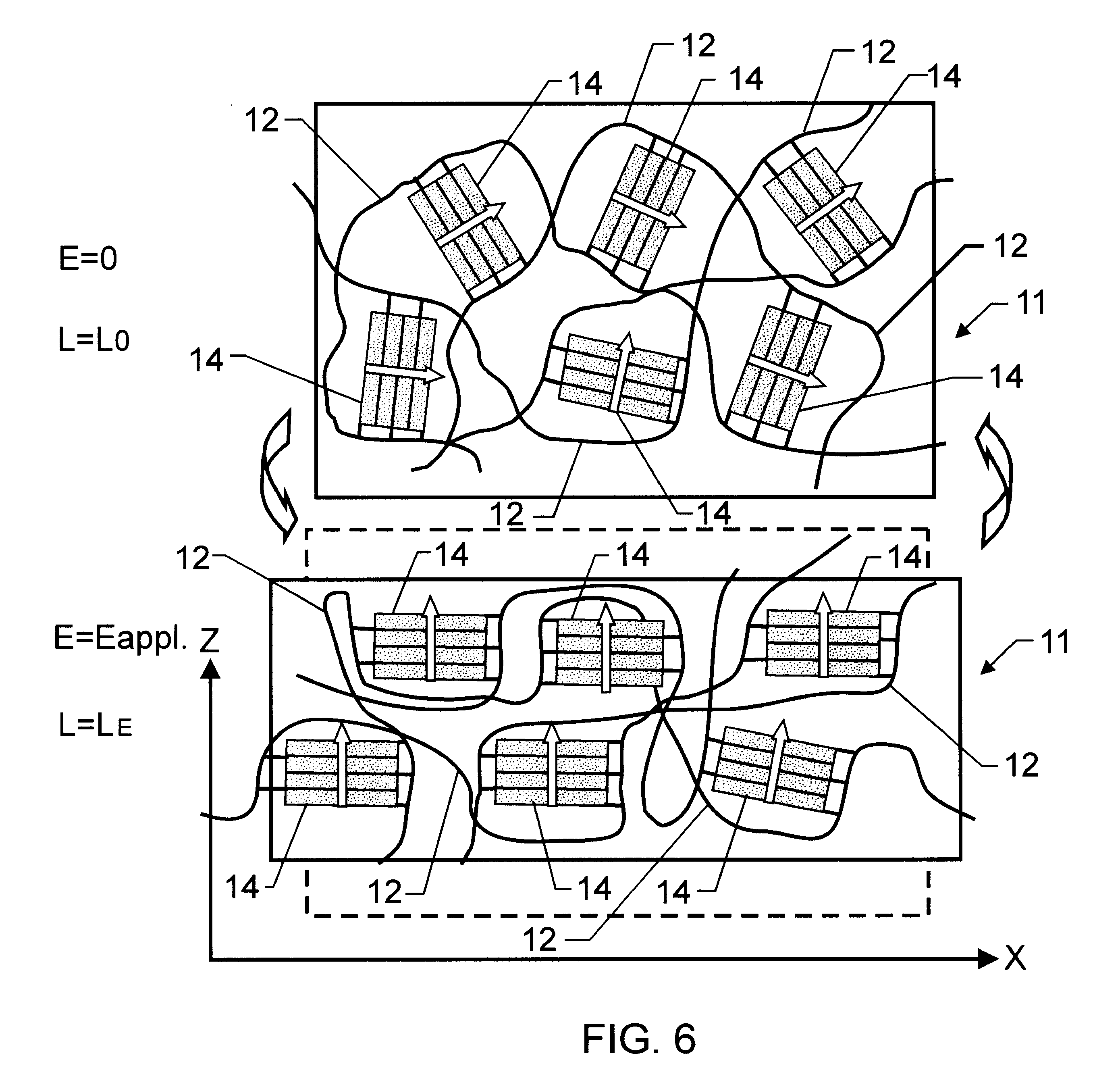Electrostrictive graft elastomers
a technology of elastomers and grafts, applied in the field of graft elastomers, can solve the problems of undetectable heavy and brittle ceramics, low modulus of polymeric materials, and low actuation authority
- Summary
- Abstract
- Description
- Claims
- Application Information
AI Technical Summary
Benefits of technology
Problems solved by technology
Method used
Image
Examples
Embodiment Construction
should be read with reference to the accompanying Drawings, wherein:
FIG. 1 is a schematic representation of the molecular structure of a graft elastomer employed in the present invention;
FIG. 2 is a schematic representation of the morphology of a graft elastomer employed in the present invention;
FIG. 3 is a graph showing the relationship between electric field induced strain and applied electric field for an electrostrictive graft elastomer according to the present invention;
FIG. 4 is a schematic representation of a polar crystal phase unit cell in a graft elastomer employed in the present invention;
FIG. 5 schematically depicts reorientation of the polar crystal phase unit cell of FIG. 4 under an applied electric field;
FIG. 6 schematically depicts rotation and reorientation of polar crystal phases in a graft elastomer from an originally randomly distributed configuration to a substantial polar alignment when an electric field is applied; and
FIG. 7 schematically depicts rotation and ...
PUM
| Property | Measurement | Unit |
|---|---|---|
| Polarity | aaaaa | aaaaa |
| Flexibility | aaaaa | aaaaa |
| Molecular weight | aaaaa | aaaaa |
Abstract
Description
Claims
Application Information
 Login to View More
Login to View More - R&D
- Intellectual Property
- Life Sciences
- Materials
- Tech Scout
- Unparalleled Data Quality
- Higher Quality Content
- 60% Fewer Hallucinations
Browse by: Latest US Patents, China's latest patents, Technical Efficacy Thesaurus, Application Domain, Technology Topic, Popular Technical Reports.
© 2025 PatSnap. All rights reserved.Legal|Privacy policy|Modern Slavery Act Transparency Statement|Sitemap|About US| Contact US: help@patsnap.com



